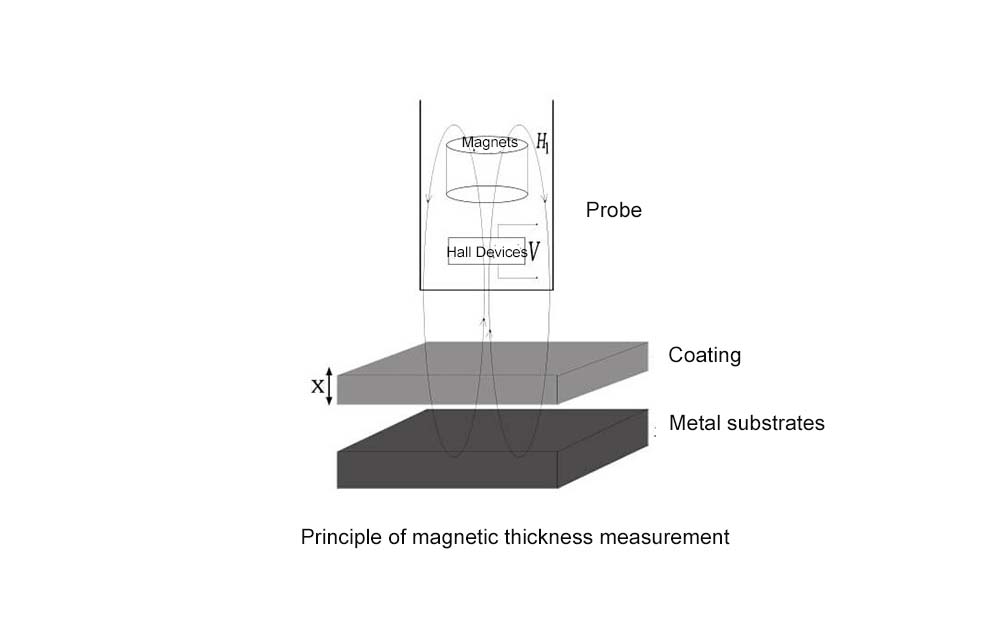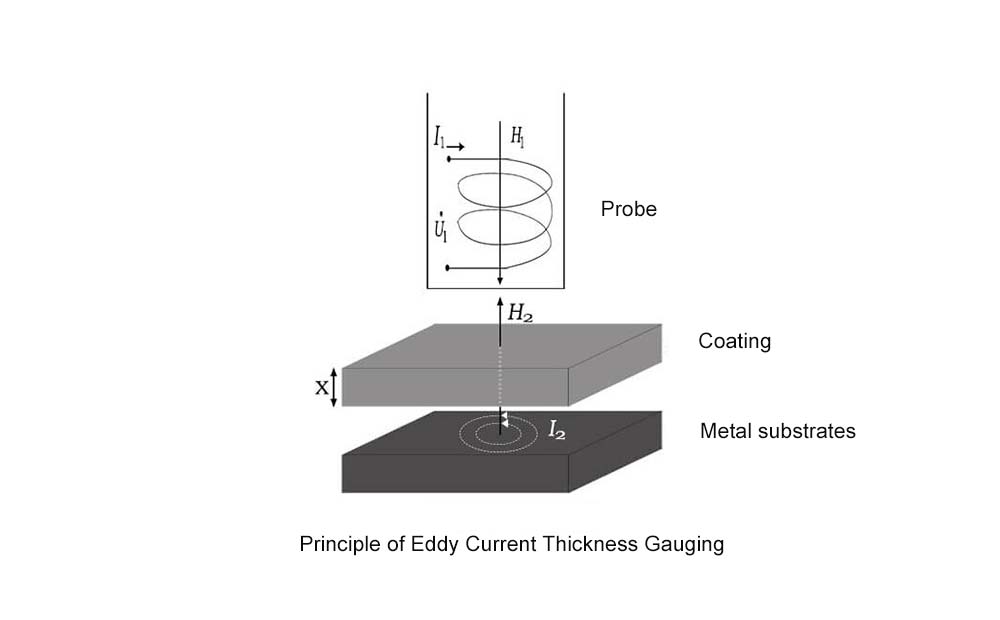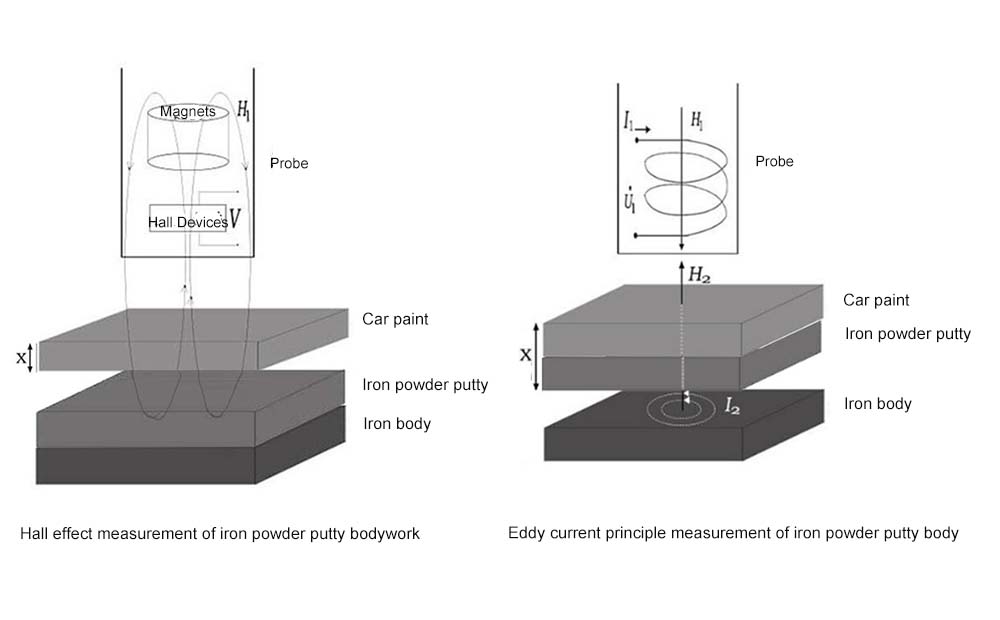Three Principles of Car Paint Meter
The car paint meter used to measure the paint thickness on automobile shells has a total of three test principles. According to the principle, it can be divided into magnetic thickness measurement, eddy current thickness measurement and ultrasonic thickness measurement. The paint film is mainly selected according to the material of the car casing. Automobile body materials are generally composed of metals such as steel, cast iron, aluminum and non-metal materials such as plastic, resin and rubber. Testing the thickness of paint films on different surfaces and different types of cars requires the use of car paint meters of different principles.
1.The magnetic method car paint meter
Both steel and iron are magnetic metals, so when measuring some steel or iron car bodies, magnetic thickness measurement is used to measure the paint film thickness. At present, the probe of the magnetic car paint meterwhich is more commonly used is to measure the paint film thickness covering the surface by measuring the magnetic path passing through the paint layer and the automobile substrate.
In measuring the iron body, the Hall effect principle is used, which simply means that the iron-based body is a magnetic metal and a magnetic induction can be generated between car paint meter's measuring probe and the body. The thickness of the paint and putty varies from vehicle to vehicle, and the magnetic induction received by the instrument is different. The instrument calculates the thickness of the cover layer on the body surface by judging the strength of the magnetic induction; the weaker the magnetic field received, the farther the probe is from the body substrate, which means that the cover layer (paint and putty) on the body is thicker, and vice versa. Conversely, the thinner the cover layer is.

2.The eddy current method car paint meter
Since the end of the 1980s, many auto manufacturers around the world have begun researching aluminum car bodies. All-aluminum bodies use both steel and aluminum materials to make cars have more dynamic driving capabilities. The paint film thickness of an all-aluminum body cannot be measured using the above magnetic method, but it can be measured by the eddy current method. The eddy current method car paint meter can generate high-frequency electromagnetic field, which will generate eddy current when measuring aluminum and then calculate the thickness of automotive paint film by measuring eddy current and phase.
In measuring the aluminum body, the eddy current principle is used. The aluminum body substrate has good electrical conductivity, and the probe will generate eddy currents when it is close to the body, as the thickness of the paint is different, the intensity of the eddy currents received by the instrument is also different. The weaker the eddy current strength received by the probe, the farther the probe is from the body substrate, which means the thicker the cover layer (paint) on the car.

a.How does iron powder putty fool the ordinary paint film meter?
Iron powder putty, as the name implies, is an ordinary car repair putty with iron powder added to make the putty also magnetic; thus, when measured with an ordinary paint meter, the probe of the instrument receives the magnetic field strength generated by the iron powder putty layer, not the magnetic field strength of the iron-based body, and the detected thickness of the car paint is the thickness of the iron powder putty on the car paint, not the thickness of the putty, thus cheating paint meter. The same is true for the thickness of the paint, which is the thickness of iron powder putty.
b.How does Linshang car paint meter determine the thickness of iron-based putty?
Although iron powder putty is magnetic, it is mixed in the putty, and there is putty powder and glue blocking between the powder particles, so it is not electrically conductive, so it cannot generate eddy currents in the putty layer either. According to the measurement principle above, it is known that eddy currents can also be generated on iron bodies. Since iron is less conductive than aluminum, the eddy currents generated on iron bodies are much weaker than on aluminum bodies. Do a small experiment, if we zero on the aluminum substrate, manually switch to the aluminum-based mode to measure the iron-based zeroing plate, can also measure a greater than 0.
Linshang car paint meter obtained a difference value interval [a,b] by comparing the data difference between Hall effect and eddy current for various different iron bodies through extensive experiments. In normal iron body measurements, the data difference between Hall effect and eddy current is within this range. If iron powder putty is encountered, the Hall effect produces a small numerical impact due to the magnetic influence of the iron powder, but the iron powder putty does not conduct electricity, the eddy current becomes weaker, and the measured paint thickness data becomes larger than the b-value range, which is judged to be iron powder putty at this time.

c.How does Linshang car paint meter determine the iron galvanized bodywork again?
Since zinc itself is not magnetic and the thickness of all galvanized layers is very small, usually a few um, much smaller than the thickness of car paint or putty; there is no galvanized layer Hall effect produces very little numerical impact and does not affect the judgment of the thickness of car paint. However, due to the electrical conductivity of zinc is better than iron, when measuring the iron galvanized body with eddy current, the eddy current becomes stronger, the measured data will become larger, and the difference between the two will be less than the a value in the difference interval [a,b]; at this time we decided that the body is iron galvanized body.

3.Ultrasonic car paint meter
In addition to various metal materials used in automobile bodies, some non-metal materials such as plastic bumpers are also used. Ultrasonic method can be used to measure the paint film thickness on the plastic bumper. The ultrasonic car paint meter can send a pulse to the paint film, the pulse is reflected from the plastic to the transducer, and then converted into a high-frequency electrical signal. The paint film thickness on the plastic bumper surface can be calculated.
Of course, there are currently some car paint meters that use both magnetic and eddy current measuring principles. When measuring different positions of the car body, the instrument can automatically switch the measurement mode to quickly and accurately measure the paint film thickness at each position.
- High precision coating thickness gauge for used car
- Automotive paint protection films coating thickness gauge
- Plating Thickness Measuring Instrument for Detecting Anti-corrosion Coating
- Linshang LS220, LS191, LS160A– Necessary for Car Cover Inspection
- Coating Thickness Gauge for Second Hand Vehicle
- Zero Adjustment Step of Coating Thickness Gauge
